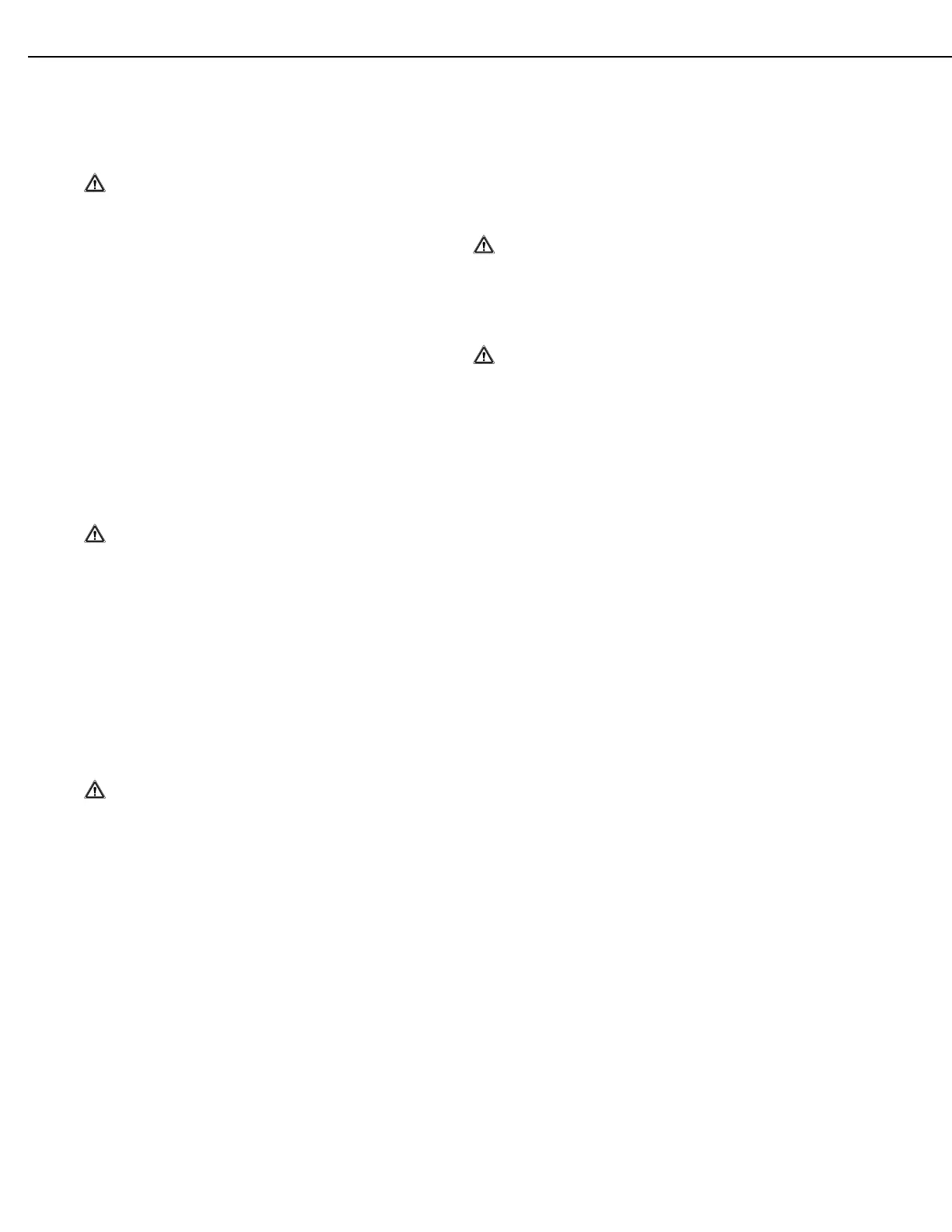46 7742836 07-2003
Maintenance
Electrical system
The engine’s electrical system features cranking, charging,
ignition and trim/tilt circuits. A battery and all necessary
wiring provide power.
Caution!
If electrical connections are reversed, or wires are dis-
connected when the key switch is ON or the engine is
running, sensitive electrical components may be immedi-
ately damaged. Do not turn off the main battery switch
until the engine has stopped.
Battery cables
The following are the minimum specifications for stranded
copper cables from the motor to the battery for all models.
The maximum length is 20 feet regardless of cable
diameter.
• 0 to 10 ft. (3.05 m) require a 1/0 AWG (80 MWG) cable
• 10 to 15 ft. (3.05 to 4.6 m) require a 2/0 AWG (100 MWG)
cable
• 15 to 20 ft. (4.6 to 6.1 m) require a 3/0 AWG (120 MWG)
cable
Caution!
1. Do not use aluminum core battery cables.
2. Failure to use battery cables of recommended gauge
and material could result in poor starting and electrical
component damage.
Batteries and connections
NOTE! Whenever you replace your battery, read and un-
derstand the information supplied with it before you
begin installation.
1. The correct battery for all Volvo Penta EFI engines is a
standard marine battery with a minimum of 650 CCA and
a minimum of 135 minutes reserve capacity.
Caution!
Do not use deep cycle batteries on EFI engines. It may
have enough cold cranking amps (CCA), it will cause
problems with EFI engines.
NOTE! It is important that the battery connections are cor-
rect. The negative battery cable must be attached
to the negative terminal (–) on the battery, and the
engine’s positive cable must be attached to the
positive terminal (+) on the battery.
2. All other batteries must be heavy duty and constructed
for marine use. They can be either vented/refillable, main-
tenance- free, or deep-cycle with a CCA or INCA rating.
1. Use bolts and nuts to secure battery cables to the bat-
tery terminals. Do not use wing nuts to secure battery
cables, even if they were supplied with the battery.
4. Tighten all battery connections. Loose battery connec-
tions may cause damage to the engine’s electrical sys-
tem.
5. Service electrical components only while the engine is
off. Be careful when identifying positive and negative
battery cables and terminals. If you touch the wrong ter-
minal with a battery cable, even briefly, the engine’s
charging system may be damaged.
Caution!
The battery terminal connections must always be insu-
lated. If the battery mounting system does not cover the
connections, install protective covers. This will help pre-
vent shorting or arcing at the battery terminals.
WARNING!
Do not expose the battery to electrical sparks or an open
flame.
Do not use jumper cables and a booster battery to start
the engine.
Remove the battery from the boat to recharge. Do not
recharge the battery in the boat.
The service life of your battery depends largely on how it is
maintained.
• Keep batteries dry and clean. Oxidation or dirt on the
battery and battery terminals may cause short circuits,
voltage drop, and discharge (especially in damp
weather).
• Clean battery terminals and leads to remove oxidation.
• Tighten cable terminals tightly.
• Spray battery terminals and connections with and anti-
corrosive agent, or coat them with petroleum jelly.
• Check that all other electrical connections are dry and
free of oxidation, and that there are not loose connec-
tions.
• Always switch off the charging circuit before removing
the battery charger connectors.
• Inspect your battery at regular intervals for specific gravity
(state of charge), individual cell water level, cleanliness
and tight, greased connections.
• If the battery has become discharged for no apparent
reason, check all electrical system components for mal-
function, or a switch left
ON,
before installing a recharged
battery.
• Electrolyte levels should be 0.2 – 0.4 inches (5 – 10
mm) over the plates in the battery. Top off if necessary,
using distilled water. After topping off, run the engine at
fast idle for at least 30 minutes to charge the battery.
NOTE! Some maintenance-free batteries have special in-
structions. Make sure to follow them carefully.

